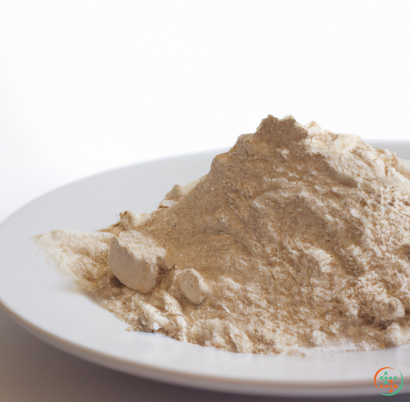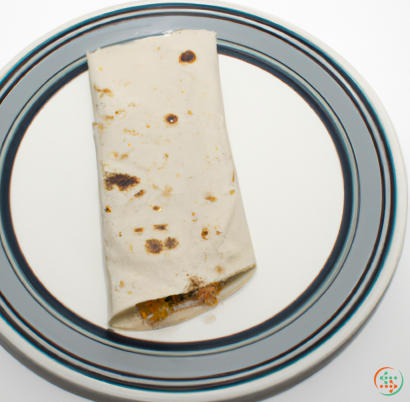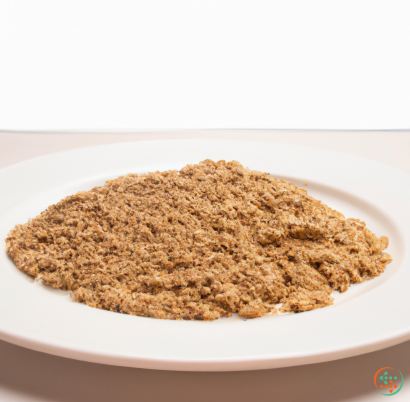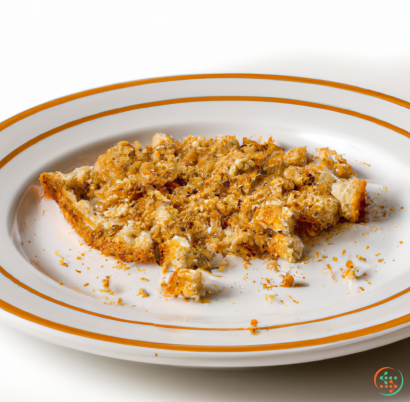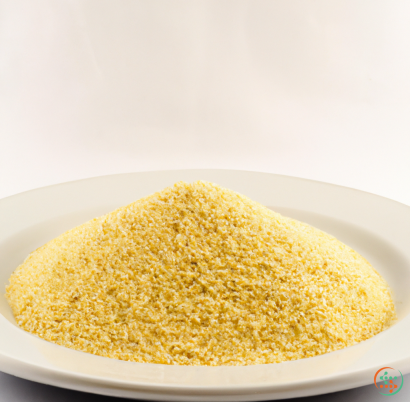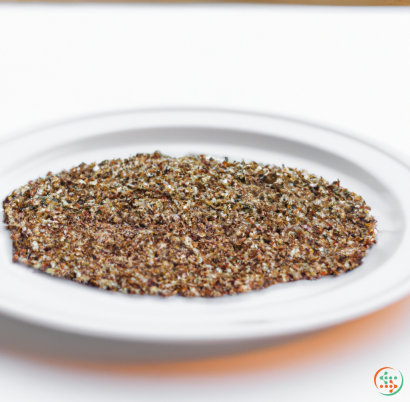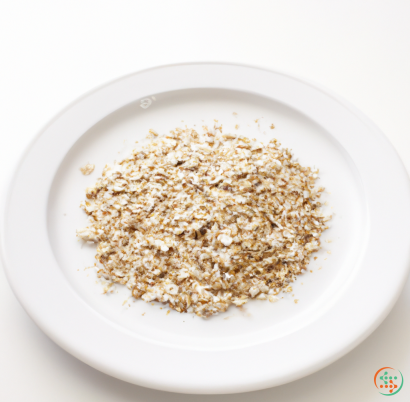Rye Flour
Rye flour is a type of flour made from rye grain, which is a cereal grain related to wheat. Rye flour is darker in color than traditional wheat flour and has a distinctively nutty and tangy flavor. It is low in gluten, which means it requires additional binding agents in baking, and is typically used as a substitute for wheat flour in breads and pastries.
What is Rye Flour?
Rye flour is made from ground rye grains, which come from a grass-like plant. Rye grain, sometimes referred to as ‘rye berries’, is related to wheat but has a more robust flavor and is also higher in fiber and lower in gluten. Rye flour is available in several forms including light, medium, and dark. It is typically used in combination with other flours, such as wheat and barley, to help bind the dough and improve the texture of baked goods.
The taste and texture of rye flour can differ greatly depending on how finely it is ground and how much it is processed. For example, coarsely or stone-ground rye flour has a malty and slightly bitter taste, while finely ground rye flour is much milder and has a more earthy flavor. Processed rye, also known as pumpernickel rye flour, is darker in color and has a sweet, earthy flavor that is often used in denser baked goods such as rye bread and other pastries.
Nutrition facts
Rye flour is higher in fiber and micronutrients, such as selenium, phosphorus, copper, and manganese compared to traditional wheat flour. Studies have also suggested that rye flour can help improve your digestion, control your appetite, and reduce cholesterol levels.
Rye flour is also low in gluten, which is a protein found in wheat flour. Gluten helps to strengthen and stretch the structure of dough during the baking process, so it is not suitable as an all-purpose flour in baking. Low-gluten rye flours are typically used in combination with other types of flour, such as wheat, to give a desired texture to a finished product.
How to use Rye Flour
Rye flour is best used in combination with other types of flour when baking, as it does not contain enough gluten to form a strong dough structure by itself. Rye flour is popular in traditional recipes such as German rye breads, rye crackers, and tartines. It can also be used in baking applications like muffins, pancakes, quick breads, and cookies when combined with wheat flour.
The flavor of rye flour is intense, so it should be used sparingly. When substituting rye flour for wheat flour in a recipe, start off with a ratio of 1:3, or one part rye flour to three parts wheat flour. This ratio can be adjusted depending on the desired results. It is also important to note that baked goods made with rye flour tend to brown more quickly than those made with wheat flour due to the tyrosine in the rye, so they should be watched carefully during baking.
Rye flour is an excellent alternative for those looking for something a bit different in their baking recipes. It is high in nutritional content, low in gluten, and has a distinctively nutty and tangy flavor. When combined with wheat flour, it makes a unique and delicious combination in any baking creation.
Have you ever wondered how Rye flour gets from the ground to your dinner table? Rye flour is a staple in many diets, providing a nutritious alternative to wheat-based flours, and is commonly used for baking and making breads. But what is the journey from the field to your plate like?
In this article, we will explore the path taken by Rye flour from the field to your dinner plate. We'll take a look at the various processes involved in producing Rye flour, such as harvesting and threshing, milling and packaging. We'll also learn about the important role grains play in providing nutrition to humans, and why Rye flour is increasingly becoming a favourite amongst bakers and chefs.
Let’s get started!
Grain Production
The production of Rye flour starts with the farming of grains. Rye is one of many cereal grains, which also includes wheat, corn, oats, barley, sorghum, and millet. In order to produce Rye flour, Rye grains must first be cultivated.
Rye is grown mainly in cool regions, where temperatures are below 25°C. It can survive winter frost, but cannot thrive in hot summer climates. It prefers moist, well-drained soils of medium to low fertility. Rye is grown in Europe and is particularly popular in Northern Europe. The seed is planted in the autumn, and the plants reach maturity in 6-9 months.
When the grain is ready to harvest, it is cut down and allowed to dry. This process, called threshing, separates the grain from the plant. The grain is then gathered and taken to a milling facility.
Milling Process
At the milling facility, the grains are sorted and cleaned. The outer husks are removed and the grains are broken up into smaller pieces known as groats. The groats are then washed and dried to remove the moisture.
Next, the groats are milled into flour. This process is done using a roller mill, which crushes the grain into fine powder of various consistencies. For Rye flour, the grind is often between a medium and fine texture.
The milling process also involves sifting and bolting. Sifting removes bits of husk that could still remain in the flour, and bolting is the process of removing bran from the flour. In some cases, only the starchy part of the grain is used. This process is known as ‘refining’, and results in a very fine, white flour.
Nutritional Value
Rye flour is highly nutritious, and is a good source of many vitamins and minerals. It is particularly rich in dietary fiber, vitamins, minerals, carotenoids, and antioxidants. It is also considered to be an excellent source of protein and carbohydrates, providing a sustained release of energy which helps to regulate blood sugar.
Rye flour also contains a significant amount of plant-based omega-3 fatty acids. These are essential for maintaining brain and heart health. In comparison to wheat, Rye flour has a lower glycemic index, making it a better choice for people with diabetes or metabolic syndrome.
Packaging and Storage
After the milling process has been completed, the flour is carefully packaged. Generally, Rye flour is packed in plastic or paper bags, or in containers made from recycled materials. The package should be tightly sealed to prevent the flour from absorbing moisture and spoilage.
The bags or containers are then shipped to stores or supermarkets, where they can be purchased by customers. Once Rye flour has been purchased, it should be stored in an airtight container in a cool, dry place. If the flour is stored correctly, it can last for several months.
Baked Goods
Now that you have a better understanding of how Rye flour is produced and transported, let’s talk about how it can be used to create delicious baked goods. Rye flour has a slightly sweet and nutty flavor, and is often used to make breads, cakes, biscuits, and other pastries.
It can also be used to make pizza crusts and crumble toppings, as well as pancakes and waffles. Rye flour is a great alternative to wheat flour, as it is lower in calories and carbohydrates and makes baked goods softer and more moist.
Conclusion
Rye flour is a nutritious and flavorful alternative to wheat flours, and is becoming increasingly popular amongst bakers and chefs. It is made from Rye grains that are grown in cool regions, and is milled, sifted and bolted to remove husks and refine the flour.
Rye flour is highly nutritious, containing dietary fiber, vitamins, minerals, carotenoids, and antioxidants. It is also a good source of plant-based omega-3 fatty acids and is lower in calories and carbohydrates than wheat flour.
Rye flour can be used to make a variety of bakery products, such as breads, cakes, biscuits, and other pastries. It is important to store the Rye flour in an airtight container, in a cool and dry place, in order to maintain its freshness and shelf life.
We hope that with this article, you now have a greater appreciation for the journey that Rye flour takes from the field to your dinner plate!
| Vitamin E | 0.83 mg | |
| Vitamin K | 0.0059 mg | |
| Vitamin B1 | 0.33 mg | |
| Vitamin B2 | 0.09 mg | |
| Vitamin B3 | 0.8 mg | |
| Vitamin B4 | 0.0108 grams | |
| Vitamin B5 | 0.67 mg | |
| Vitamin B6 | 0.23 mg | |
| Vitamin B9 | 0.023 mg |
| Calcium | 0.013 grams |
Daily Value 1.3 g
|
| Iron | 0.91 mg |
Daily Value 0.018 g
|
| Magnesium | 0.032 grams |
Daily Value 0.4 g
|
| Phosphorus | 0.13 grams |
Daily Value 1.25 g
|
| Potassium | 0.224 grams |
Daily Value 4.7 g
|
| Sodium | 0.002 grams |
Daily Value 2.3 g
|
| Zinc | 0.00133 grams |
Daily Value 0.011 g
|
| Copper | 0.21 mg |
Daily Value 0.9 mg
|
| Manganese | 0.00116 grams |
Daily Value 0.0023 g
|
| Selenium | 0.0176 mg |
Daily Value 0.055 mg
|
| Tryptophan | 0.111 grams | |
| Threonine | 0.278 grams | |
| Isoleucine | 0.235 grams | |
| Leucine | 0.556 grams | |
| Lysine | 0.21 grams | |
| Methionine | 0.113 grams | |
| Phenylalanine | 0.445 grams | |
| Tyrosine | 0.199 grams | |
| Valine | 0.323 grams | |
| Arginine | 0.38 grams | |
| Histidine | 0.147 grams | |
| Alanine | 0.337 grams | |
| Aspartic Acid | 0.496 grams | |
| Glutamic Acid | 2.457 grams | |
| Glycine | 0.333 grams | |
| Proline | 0.965 grams | |
| Serine | 0.434 grams |
| Glucose | 0.14 grams |
|
| Fructose | 0.09 grams |
|
| Sucrose | 0.57 grams |
|
| Maltose | 0.13 grams |
|
| Total Sugars | 0.9 grams |
per 100g
|
| Palmitic acid (16:0) | 0.14 grams |
|
| Stearic acid (18:0) | 0.01 grams |
|
| Total Saturated fatty acids: | 0.15 g | |
| Oleic acid (18:1) | 0.15 grams |
|
| Palmitoleic acid (16:1) | 0.01 grams |
|
| Gadoleic acid (20:1) | 0.01 grams |
|
| Total Monounsaturated fatty acids: | 0.17 g | |
| Linolenic acid (18:3) | 0.08 grams |
|
| Linoleic acid (18:2) | 0.5 grams |
|
| Total Polyunsaturated fatty acids: | 0.58 g | |

